Let’s Do Resin Inlays!
Who hasn’t been sucked into an entire afternoon of resin casting videos on Youtube at this point? I think it’s safe to say that it’s popular. Mostly because it’s super easy to do and the end results can be amazing. With a CarveWright CNC, the results can be spectacular.
Recently, I made a couple of tutorial videos for Designer 4’s SVG import and Vcarve Suite’s pocketing with Vector Groups. These tutorials were from a project I happened to be working on for a beautiful new niece of mine, Isabella. She requested something with elephants or butterflies, so I found a way to do both. I affectionately call it “Bellaphant”.
Step 1 – Design
I detail the design process step by step in the tutorial videos below.
Once the the design was completed, I cleaned it free of any remaining dust and prepared to do my resin casting.
Step 2 – Resin Casting
I ordered a marine epoxy resin kit and a set of dyes from Amazon. There are dozens of brands to choose from and most are very reasonable in price, so I don’t have any specific recommendations. They all seemed to be about same.
I learned during my research that I should put some clear resin around the edges if you’re working with wood with any open grain. This helps prevent the colored resin from seeping into the edge grain which can be impossible to remove. Especially since I’m using a veneered piece. I have very little surface to sand before I break through. The instructions said to let that sit for 90 minutes before applying more.
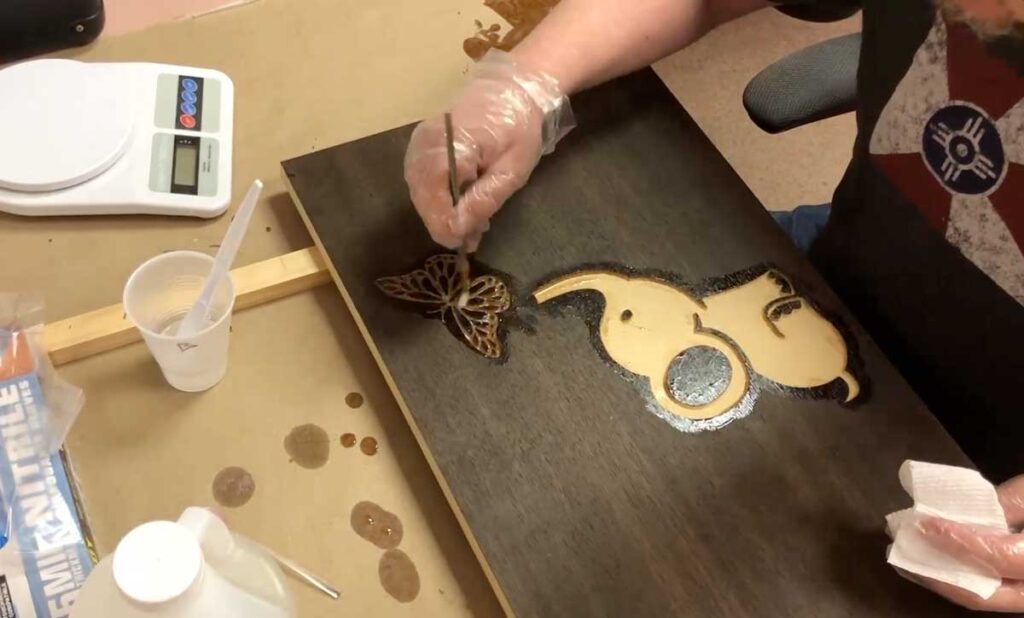
The liquid color dyes require a white be added to any color you wish to be opaque. Since I planned to make the butterfly white, I decided to do the entire piece with one batch. I started with the white and filled the butterfly. Since these where small areas, I had to manually spread it around to get it into all the crevices.
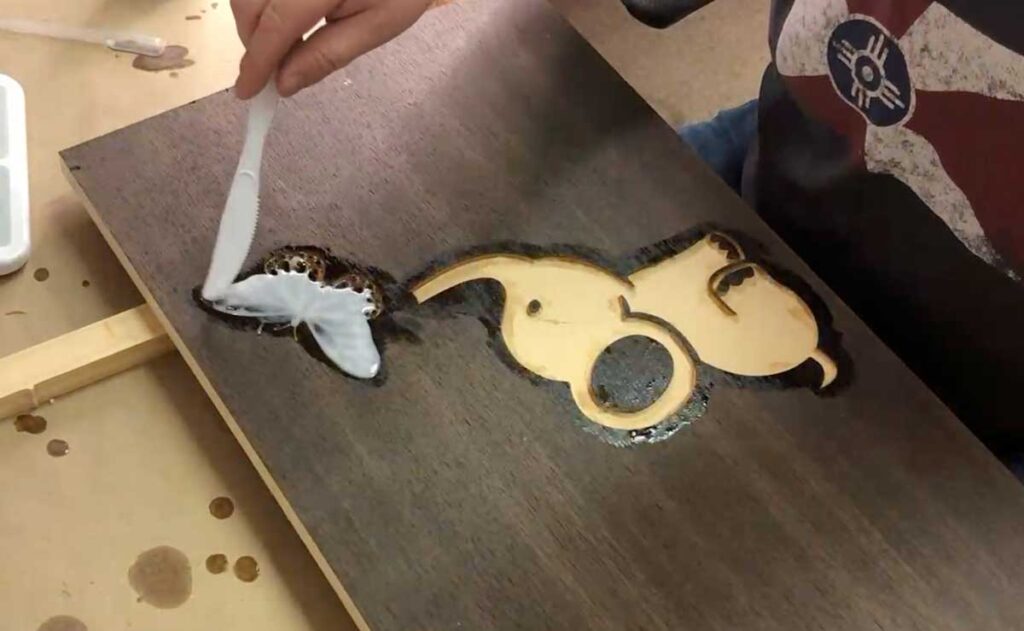
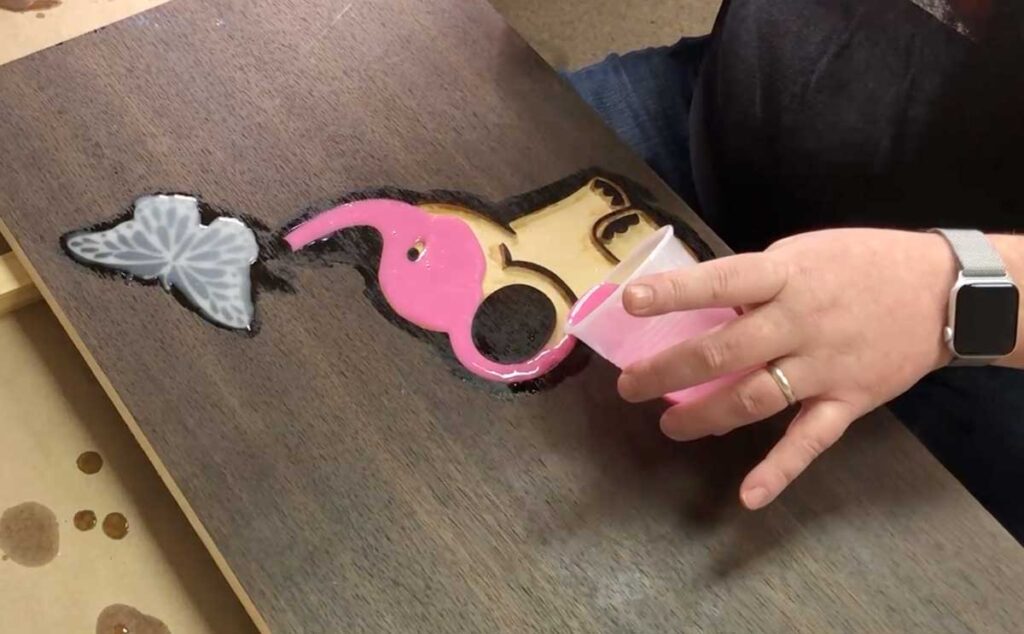
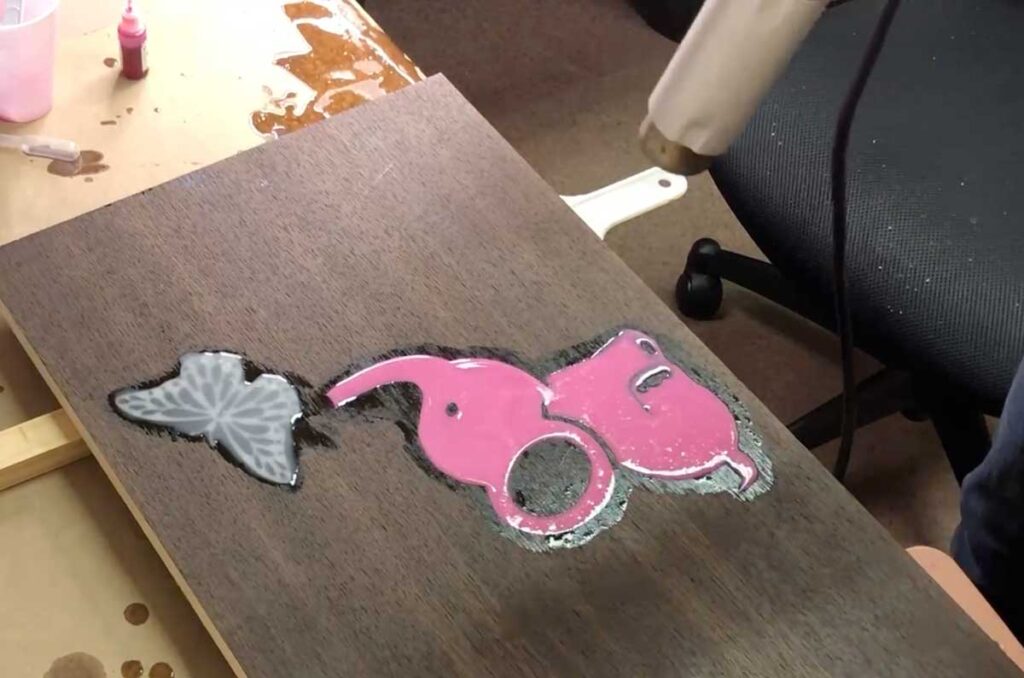
Once I felt the resin was sufficiently cured, I started sanding with my orbital sander. I was very concerned with sanding through the veneer, so I proceeded cautiously. It actually tool much less time than I expected.
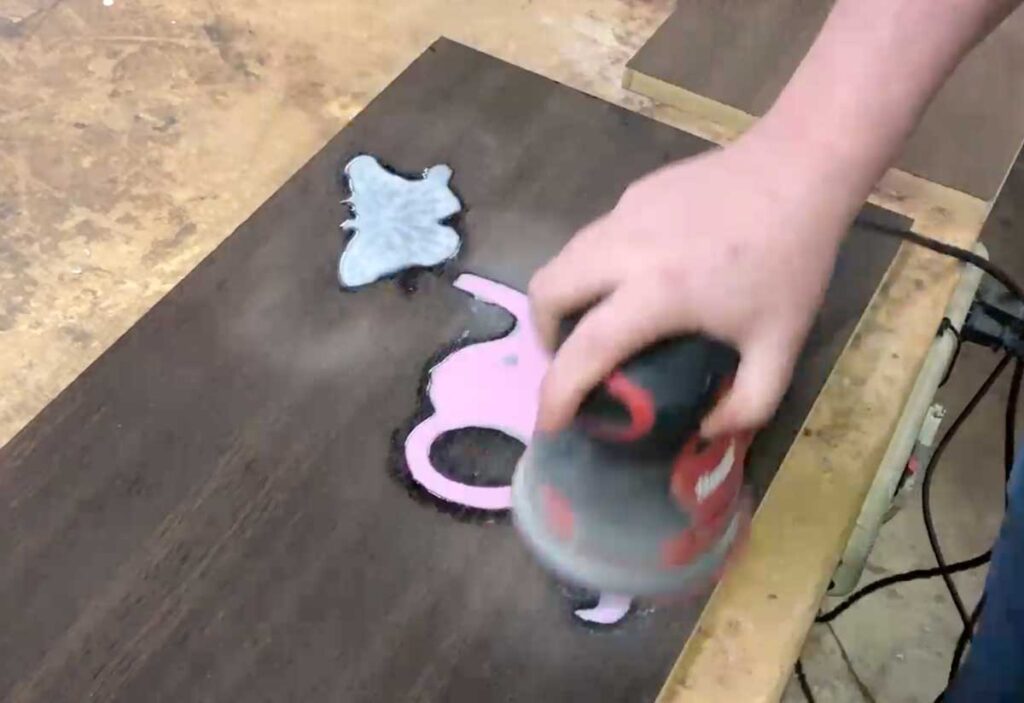
Now, the project is ready for the finishing touches. I cut it down to size. I wanted it to be square.
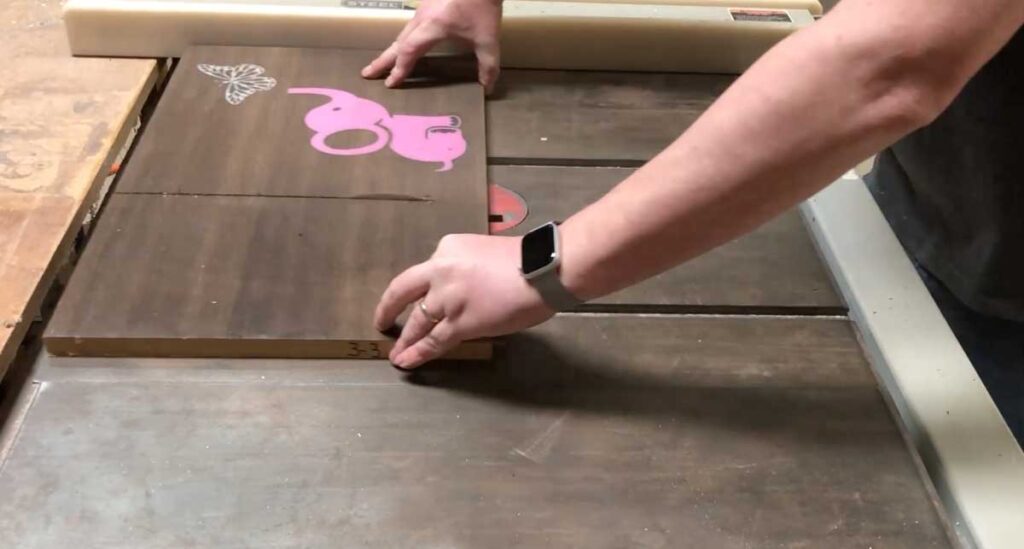
Then, I began making a frame for it from half inch material painted white.
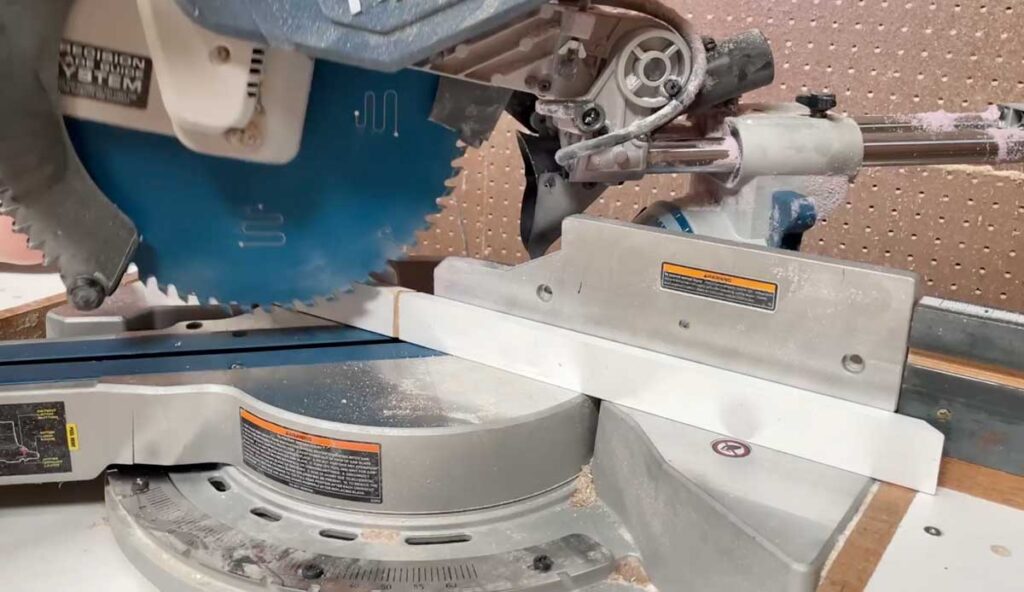
I space the frame so it would be just above the flush level of the piece.
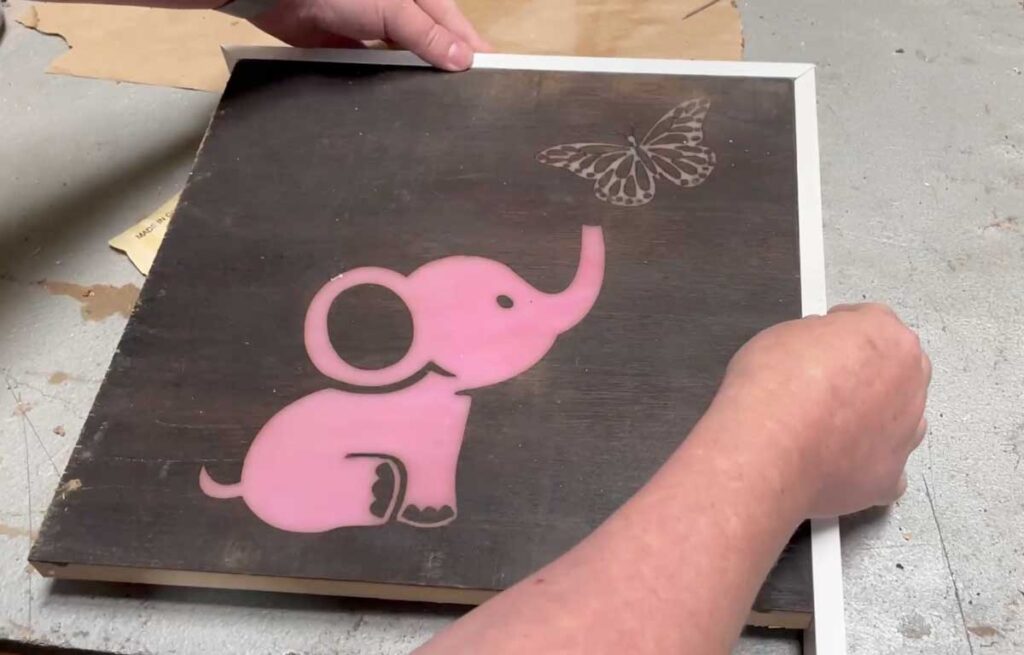
Once the pieces were cut, there were glued and clamped together.
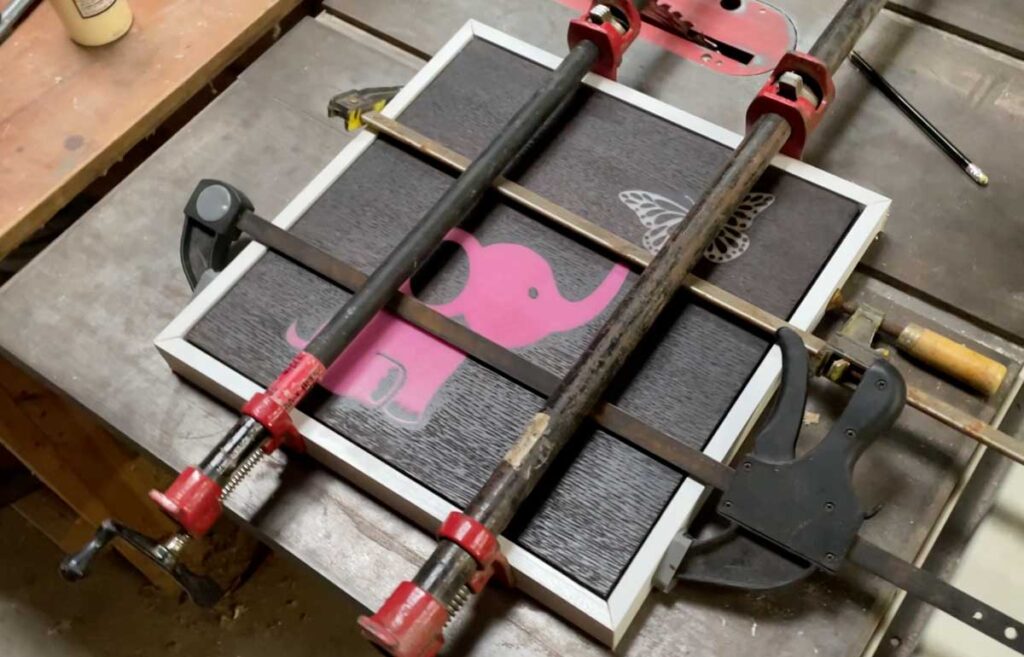
Last, the finished piece got a nice gloss clear coat.
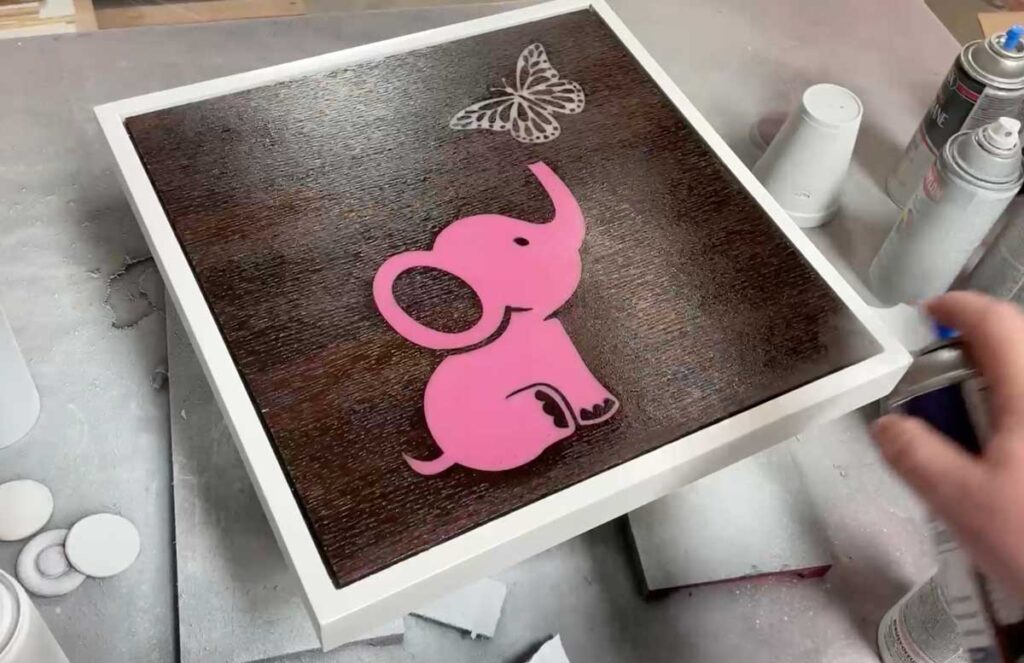
All that was left to do was hang it in the nursery.
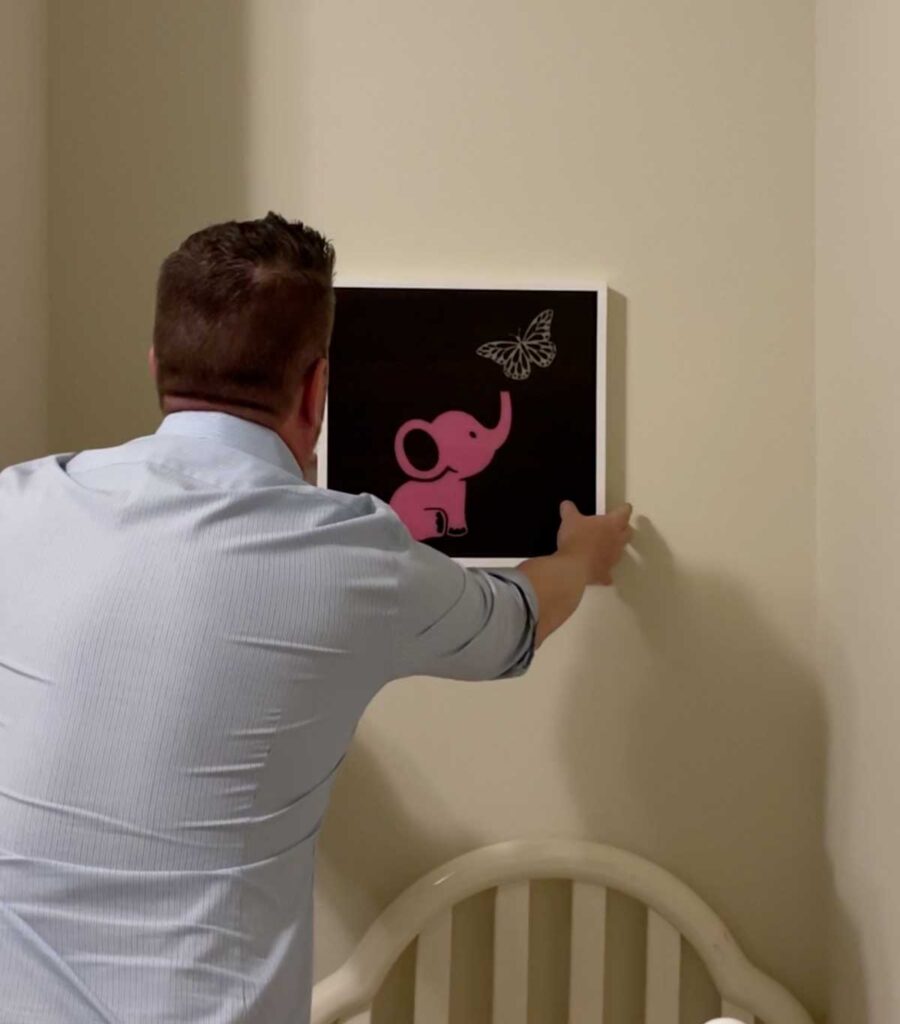
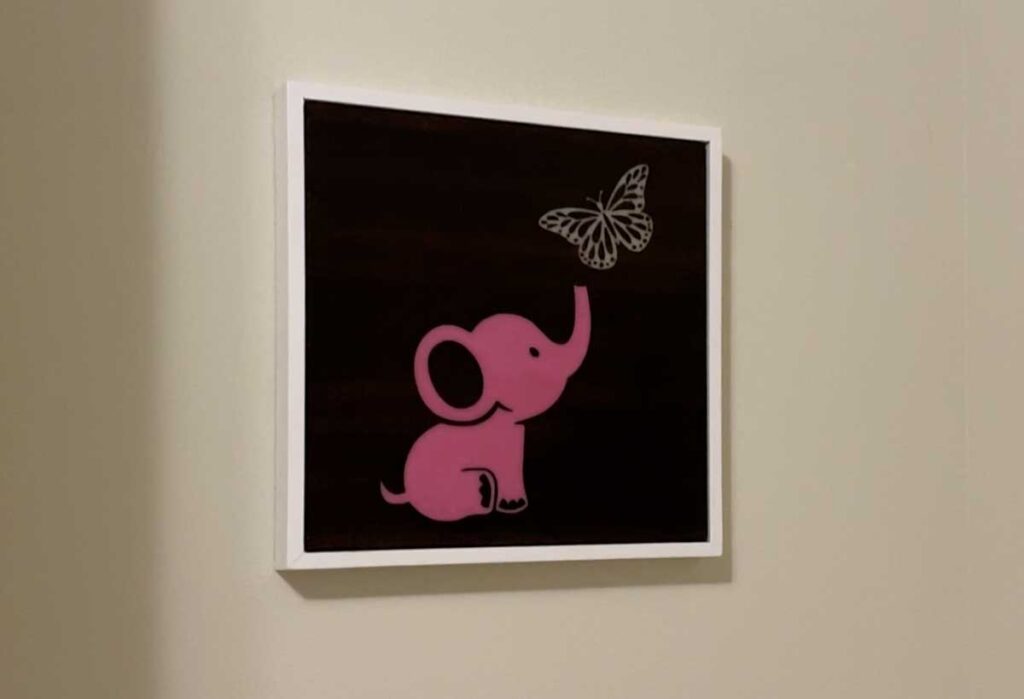
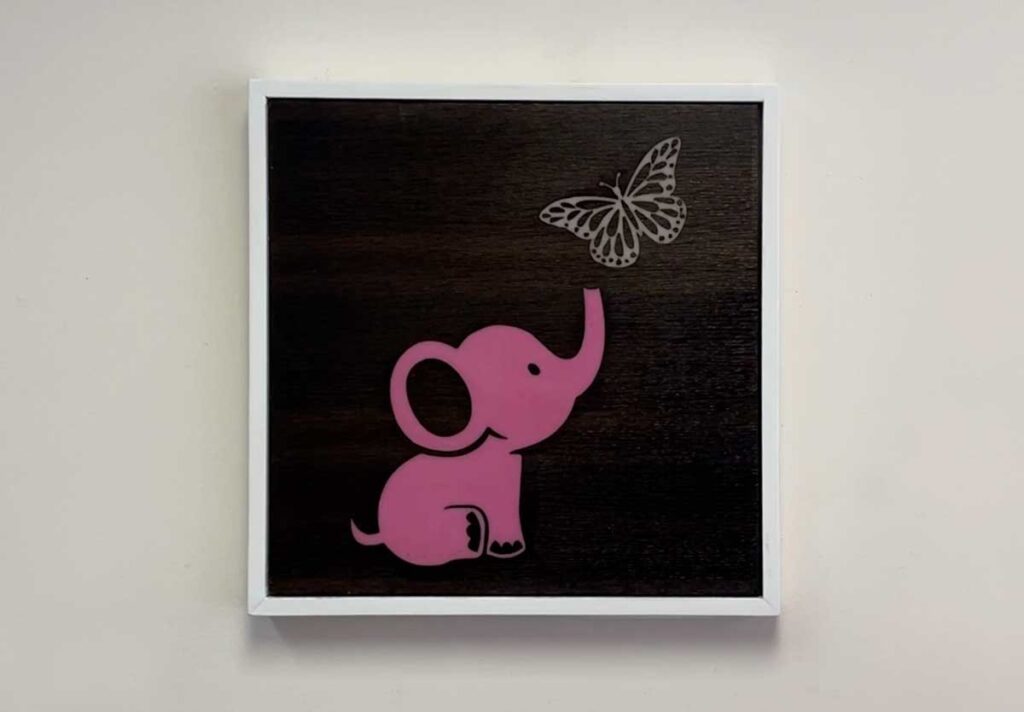
Explore Project Categories
Customer Stories
News
Subscribe To Our Newsletters
Learning, projects, customer highlights, and promotions in your inbox!

